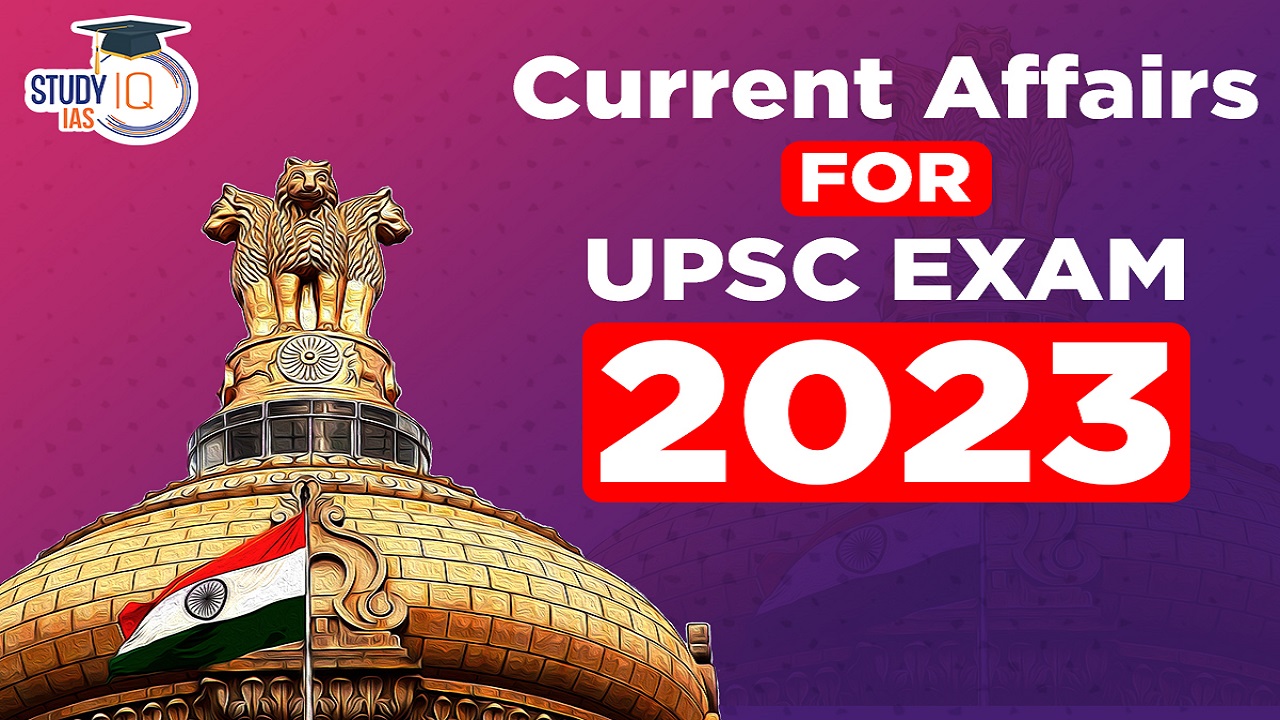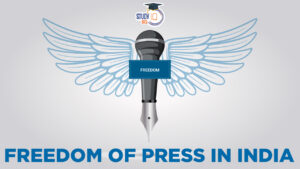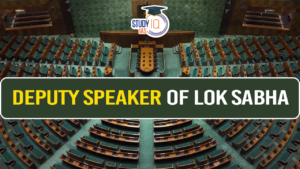Current Affairs 18th July 2023 for UPSC Prelims Exam
Bandhavgarh Tiger Reserve
Context: An injured tigress died at Bandhavgarh Tiger Reserve (BTR) in Madhya Pradesh’s Umaria district.
About Bandhavgarh Tiger Reserve (BTR)
- Definition: It is located in the eastern Satpura hill range of Umaria and katni districts.
- Bandhavgarh was declared a national park in 1968 and then became Tiger Reserve in 1993.
- Name: Mythologically the name “ Bandhavgarh” means (Bandhav = Brother and garh = Fort). This fort was built and given to brother Lakshman by Lord Rama, to keep a watch on lanka and hence it acquired the name.
- Reference to this is also found in the Narad Panch Ratna and Shiva Sanhita Puran.
- Famous For: It is known for the Royal Bengal Tigers. The density of the tiger population at Bandhavgarh is the highest known in India as well as in the world.
- Topography: Varies between steep ridges, undulating forests and open meadows.
- Flora:
- The vegetation of Bandhavgarh is specially filled with Sal forest in the valleys, and Bamboo stretches on the lower slopes of the region.
- Some of the most famous floral species include Saj (Terminaliatomentosa), Dhaora (Anogeissus latifolia), Tendu, Arjun (Terminalia arjuna), Amla (Emblica officinalis), Palas (Butea monosperma) etc.
- Fauna:
- The important prey species consists of chital, sambhar, barking deer, nilgai, chinkara, wild pig, chowsingha, langur and rhesus macaque.
- Dependent upon them are the major predators like tiger, leopard, wild dog, wolf and jackal.
Current Affairs 17th July 2023 for UPSC Prelims Exam
Biodynamic Farming
Context: Biodynamic farming, a century-old style of organic farming ensures environmental and ecological sustainability.
What is Biodynamic Farming?
- Biodynamic farming is an organic approach to agriculture that focuses on preserving the interrelationships between soil, plants, animals, and the surrounding ecosystem.
- It was developed by philosopher Rudolf Steiner in the 1920s as a response to concerns about soil degradation and declining crop and livestock health.
Key Features of Biodynamic Farming
- Holistic Approach: Biodynamic farming takes a spiritual-ethical-ecological approach to agriculture, emphasizing the interconnectedness of all elements within the farming system.
- Soil Restoration and Balance: The aim is to heal and replenish the soil, maintaining its fertility and vitality.
- Crop Diversification: Farmers grow a variety of crops instead of monocultures to prevent soil nutrient depletion and promote biodiversity.
- Chemical-Free Practices: Biodynamic farming minimizes the use of chemical soil treatments and off-farm inputs. Instead, farmers rely on green manure, biodynamic preparations (such as herbal and mineral preparations), and practices like livestock integration for soil fertility.
- Natural Weed and Pest Control: Biodynamic farmers employ strategies such as proper timing of planting, shade canopy, and understanding the life cycles of weeds to control them naturally. Soil fertility adjustments are made to inhibit weed growth. Natural pest control methods, such as encouraging beneficial insects and birds, are emphasized.
- Water Conservation: Biodynamic farming promotes water conservation practices to minimize water usage and reduce waste.
- Livestock Integration: Biodynamic farms often integrate livestock into the farming system, allowing for nutrient cycling and promoting a balanced ecosystem.
The Benefits of Biodynamic Farming
- Healthier Produce: Biodynamically grown produce is organic, free from chemical residues, and often considered to be of higher quality, taste, and nutritional value.
- Environmental Sustainability: Biodynamic farming helps preserve soil health, biodiversity, and natural habitats. It reduces pollution of soil and waterways, promotes energy efficiency, and can withstand environmental challenges more effectively.
- Ecological Balance: By emphasizing the interconnectedness of the farming system, biodynamic farming supports the overall balance and resilience of the ecosystem.
- Enhanced Soil Fertility: Biodynamic practices help restore and maintain soil fertility, ensuring long-term agricultural productivity.
- Long-Term Sustainability: Biodynamic farming aims to create a sustainable agricultural system that can meet current and future food production needs while minimizing ecological impacts.
Air Independent Propulsion (AIP) System
Context: As India begins negotiations with France for three more scorpene-class submarines, the Naval Group has started working on qualifying DRDO developed air independent propulsion system for installation on scorpene subs.
More on News
- The Indian navy will retrofit all of its Scorpene class submarines with air independent propulsion or AIP systems, beginning in 2024. This will boost their endurance as well as stealth.
- Recently, Larsen & Toubro and the Defence Research and Development Organisation (DRDO) signed a contract for the realisation of two Air Independent Propulsion (AIP) System Modules for Kalvari Class of submarines of the Indian Navy.
About Air Independent Propulsion (AIP) System
- Prolonged Submergence through AIP:
- Modern Diesel-Electric submarines using their large network of batteries can remain submerged for 4-5 days at max before they are required to recharge them for which non-nuclear submarines have to come to periscope depth to carry out activity called “snorkelling” so that it can again use its Diesel engines to recharge their batteries.
- The use of AIP on a diesel-electric submarine, greatly increases their underwater endurance, allowing them to continuously stay submerged for weeks without surfacing.
- Fuel Cell Technology: The DRDO AIP uses fuel cell technology.
- There are many fuel cell types, but the principal ones include the alkaline fuel cell (AFC), proton exchange membrane (PEM) fuel cell, direct methanol fuel cell (DMFC), molten carbonate fuel cell (MCFC), phosphoric acid fuel cell (PAFC), and solid oxide fuel cell (SOFC).
- DRDO’s AIP uses PAFC, which has some advantages over other fuel cell types.
- PAFCs offer a broader choice of fuel being more tolerant of fuel impurities. It can operate using reformed hydrocarbon fuels (Methanol) or biogas.
- PAFC operating temperatures (150 to 200 °C) are higher and as a result they generate steam as byproduct, besides electric power for propulsion.
- The steam can be used to meet other heating requirements, pushing up operating efficiency to as high as 70%.
- More Safety: The technology of this indigenous AIP system is unique that generates hydrogen on demand thereby eliminating the need for carrying hydrogen on board which is a major safety concern for a submarine.
- Less Noise: AIP decreases the noise levels made by the submarines. This makes it hard to detect the submarines.
- Importance:
- The DRDO has achieved 14 days endurance with its Phosphoric acid fuel cell (PAFC) based Air-independent propulsion (AIP) system then India is par with Global leaders in AIP System.
- The record set by a Type 212A German Submarine using a Siemens proton exchange membrane (PEM) compressed hydrogen fuel cells based Air-independent propulsion (AIP) system was for 18 days.
- DRDO’s AIP System shall fulfil India’s aspirations to become Atmanirbhar in critical technologies.
- Principally this is green technology since the by-product of the reaction is non-polluted water which can be released into the oceans.
- The DRDO has achieved 14 days endurance with its Phosphoric acid fuel cell (PAFC) based Air-independent propulsion (AIP) system then India is par with Global leaders in AIP System.
Election to Rajya Sabha
Context: Six Trinamool Congress nominees and one from the BJP have been elected unopposed to the Rajya Sabha from West Bengal.
- In our country, Parliament consists of two Houses:
- Council of States (Rajya Sabha)
- House of the People (Lok Sabha).
- Definition: The Rajya Sabha represents the States of India.
- Current Seats: The Rajya Sabha currently has 245 members, including 233 elected members and 12 nominated. As per the constitutional limit, the Upper House strength cannot exceed 250.
- The Vice-President is the chairperson of the Rajya Sabha.
- Permanent House: Rajya Sabha is a permanent House and cannot be dissolved.
- To ensure continuity, one-third of its members retire after every second year, under Article 83(1) of the Constitution, and “biennial elections” are held to fill these vacancies.
- Vacancies arising due to resignation, death or disqualification are filled up through bypolls, and those elected serve out the remainder of their predecessors’ term.
- Tenure: Members of the Rajya Sabha are elected for a term of six years. They can get re-elected.
- Process of Election: Rajya Sabha is an indirectly elected body.
- Elected by MLAs: Rajya Sabha MPs are elected by MLAs through an indirect election.
- Article 80(4) provides that members shall be elected by the elected members of state Assemblies through a system of proportional representation by means of a single transferable vote.
- Nominated Members: Out of the 245 members, 12 are nominated by the President.
- Under Article 80(3), the 12 nominated members should have special knowledge or practical experience in matters like literature, science, art etc.
- A nominated member may join a party within six months of taking a seat.
- Elected by MLAs: Rajya Sabha MPs are elected by MLAs through an indirect election.
Single Transferable Vote system (STV)
- It is a variant of Proportional Representation and is followed for Rajya Sabha elections. Every State has a specific quota of seats in the Rajya Sabha. The members are elected by the respective State legislative assemblies. The voters are the MLAs in that State. Every voter is required to rank candidates. To be declared the winner, a candidate must secure a minimum quota of votes.
- Basis of Representation: The number of members to be elected from each State has been fixed by the fourth schedule of the Constitution. The rationale behind is:
- The Constitution makers did not adopt symmetrical representation for Rajya Sabha as it gives equal representation to every state. It would have meant a small State having the same representation as the larger states. USA has symmetrical representation in the Senate.
- They also did not adopt representation based on population of a region as States with larger population like Uttar Pradesh would have got more representatives than States with smaller population like Sikkim.
- Counting of Votes:
- The candidate that gets rank 1 from an MLA secures a first preference vote. In order to win, a candidate needs a specific number of such first-preference votes. This number depends on the strength of the state Assembly and the number of MPs it sends to Rajya Sabha.
- To win, a candidate should get a required number of votes which is known as a quota or preference vote.
- The formula is = [Total number of votes/(Number of Rajya Sabha seats + 1)] + 1.
- However, the formula is changed in case more than one seat needs to be filled.
- The total number of votes required for a candidate in the case is = [(Number of votes x 100) / (Vacancies + 1)] + 1.
- System of Open Ballot: The Rajya Sabha polls have a system of open ballot, but it is a limited form of openness.
- As a measure to check rampant cross-voting, which was taken to mean that the vote had been purchased by corrupt means, the system of each party MLA showing his or her marked ballots to the party’s authorised agent, before they are put into the ballot box, has been introduced.
- Showing a marked ballot to anyone other than one’s own party’s authorised agent will render the vote invalid.
- Not showing the ballot to the authorised agent will also mean that the vote cannot be counted.
- And independent candidates are barred from showing their ballots to anyone.
- NOTA: The Election Commission of India (ECI) issued two circulars, on January 24, 2014 and November 12, 2015, giving Rajya Sabha members the option to press the NOTA button in the Upper House polls.
- However, in 2018, the Supreme Court of India struck down the provision , holding that the ‘none of the above’ option is only for general elections held on the basis of universal adult suffrage, and cannot be applied to indirect elections based on proportional representation.
- No Disqualification on Cross Voting: The Supreme Court has ruled that not voting for the party candidate will not attract disqualification under the anti-defection law.
- As voters, MLAs retain their freedom to vote for a candidate of their choice.
- However, the Court observed that since the party would know who voted against its own candidate, it is free to take disciplinary action against the legislator concerned.
- Vote by Legislators without Taking Oath as a Member of the Assembly: While taking oath as a member is for anyone to function as a legislator, the Supreme Court has ruled that a member can vote in a Rajya Sabha election even before taking oath as legislator.
- It ruled that voting at the Rajya Sabha polls, being a non-legislative activity, can be performed without taking oath.
- A person becomes a member as soon as the list of elected members is notified by the ECI. Further, a member can also propose a candidate before taking oath.
Black Sea Grain Initiative
Context: Russia has halted the Black Sea grain deal that allowed the export of Ukrainian grain to other countries.
More on News
- Ukraine is among the largest exporters of wheat, maize, rapeseed, sunflower seeds and sunflower oil, globally.
- Ukraine’s access to the deep-sea ports in the Black Sea enables it to directly approach Russia and Europe along with grain importers from the Middle East and North Africa.
- Russia’s war with Ukraine has now disturbed this route, earlier used to ship 75% of its agricultural exports , precisely what the initiative sought to address.
What is Black Sea Grain Initiative?
- Background: Ukraine is a major contributor to the UN’s food aid programmes.
- When Russia invaded the country and blockaded its ports, it sent food prices soaring and raised fears of food security in the poorer nations of the world.
- Pakistan, for instance, saw wheat prices skyrocket to crisis levels.
- Black Sea Grain Initiative is aimed to calm markets by ensuring an adequate supply of grains, thereby limiting food price inflation.
- The Deal: On July 22, 2022, the UN and Turkey got Russia to agree to the Black Sea Grain Initiative.
- Under the deal, the cargo ships would be allowed to travel from and to three Ukrainian ports of Odesa, Chornomorsk and Pivdennyi (Yuzhny), after inspection that they weren’t carrying arms.
- The safe passage in the Black Sea was 310 nautical miles long and three nautical miles wide.

- Features of the Deal:
- Joint Coordination Centre (JCC): The deal put in place a JCC, comprising senior representatives from Russia, Turkey, Ukraine and the UN for oversight and coordination.
- All commercial ships are required to register directly with the JCC to ensure appropriate monitoring, inspection and safe passage.
- Inbound and outbound ships (to the designated corridor) transit as per a schedule accorded by the JCC post-inspection.
- This is done so as to ensure there is no unauthorised cargo or personnel onboard.
- Following this, they are allowed to sail onwards to Ukrainian ports for loading through the designated corridor.
- Joint Coordination Centre (JCC): The deal put in place a JCC, comprising senior representatives from Russia, Turkey, Ukraine and the UN for oversight and coordination.
- Importance of the Deal:
- This initiative has allowed Ukraine to export 32.9 million metric tons of grain and other food to the world, more than half of that to developing nations.
- As per the UN Food and Agricultural Organisation’s (FAO) Food Price Index, the supply situation in markets was seen to be easing, with the potential for further price drops.
- The initiative has made a “huge difference” to the global cost of living crisis.
- The U.N. World Food Programme (WFP) warned in March 2022 that its ability to feed some 125 million people was under threat because 50% of its grain came from Ukraine.
- As per the UN, 36 countries count on Russia and Ukraine for more than half of their wheat imports, including some of the poorest and most vulnerable, including Lebanon, Syria, Yemen, Somalia and Democratic Republic of Congo.
- The Black Sea deal is absolutely critical for the food security of a number of countries:
- People in developing countries spend more of their money on meals. Poorer nations that depend on imported food priced in dollars also are spending more as their currencies weaken and they are forced to import more because of climate issues. Places like Somalia, Kenya, Morocco and Tunisia are struggling with drought.
- Under the Black Sea grain deal, more than 625,000 tonnes of grain have so far been shipped by the WFP for aid operations in Afghanistan, Ethiopia, Kenya, Somalia and Yemen. In 2022, WFP procured more than half its global wheat grain from Ukraine.
- High costs for grain needed for food staples in places like Egypt, Lebanon and Nigeria exacerbated economic challenges and helped push millions more people into poverty or food insecurity.
- Russian Complaints:
- Russia says that it has been cheated by the West because its own exports still faced problems.
- As per Russia, it only agreed to the deal for the sake of countries in Africa and Latin America but that only around 3.2-3.4% of the grain goes to the world’s poorest countries while 40% went to prosperous countries.
- According to U.N. data, around 3% of exports under the Black Sea deal has gone to low-income countries, while high income countries get around 44% and the rest to middle-income states.
- Demands of Russia for its Continued Cooperation in the Grain Deal:
- Russia wants the resumption of its Black Sea ammonia exports via a pipeline from Russia’s Togliatti to Ukraine’s Pivdennyi port.
- The pipeline, which pumped up to 2.5 million tonnes of ammonia annually, was shut down by the war.
- Until the ammonia pipeline is restarted, Russia has said it will limit the number of vessels allowed to travel to Pivdennyi port under the Black Sea grain deal.
- In a letter to U.N. officials, Russia has said that it wants the Russian Agricultural Bank (Rosselkhozbank) reconnected to the SWIFT payments system. The bank was cut off from SWIFT by the European Union in June 2022 over Russia’s invasion.
- Russia also wants a resumption of supplies to Russia of agricultural machinery and spare parts; lifting restrictions on insurance and access to ports for Russian ships and cargo; and unblocking accounts and financial activities of Russian fertilizer companies.
- Russia wants the resumption of its Black Sea ammonia exports via a pipeline from Russia’s Togliatti to Ukraine’s Pivdennyi port.


 Freedom of Press in India, Constitutiona...
Freedom of Press in India, Constitutiona...
 Deputy Speaker of Lok Sabha, Constitutio...
Deputy Speaker of Lok Sabha, Constitutio...
 AIM4NatuRe Initiative for Nature Restora...
AIM4NatuRe Initiative for Nature Restora...





















